With there being so many different species of woodpeckers in New Hampshire, it is the perfect place to be if you like bird-watching. You might not even have to leave your house to catch a glimpse of one.
Some Woodpeckers have bright red-colored crests on their heads, while others have only three toes. There is a lot of diversity, and spotting one is quite the experience. Here are all the species you can find here in New Hampshire.
Commonly Found Woodpeckers in New Hampshire
It is pretty easy to tell when you see a woodpecker. However, identifying what species it is, is not always easy. There are specific characteristics you can look out for, though.
1. Downy Woodpecker
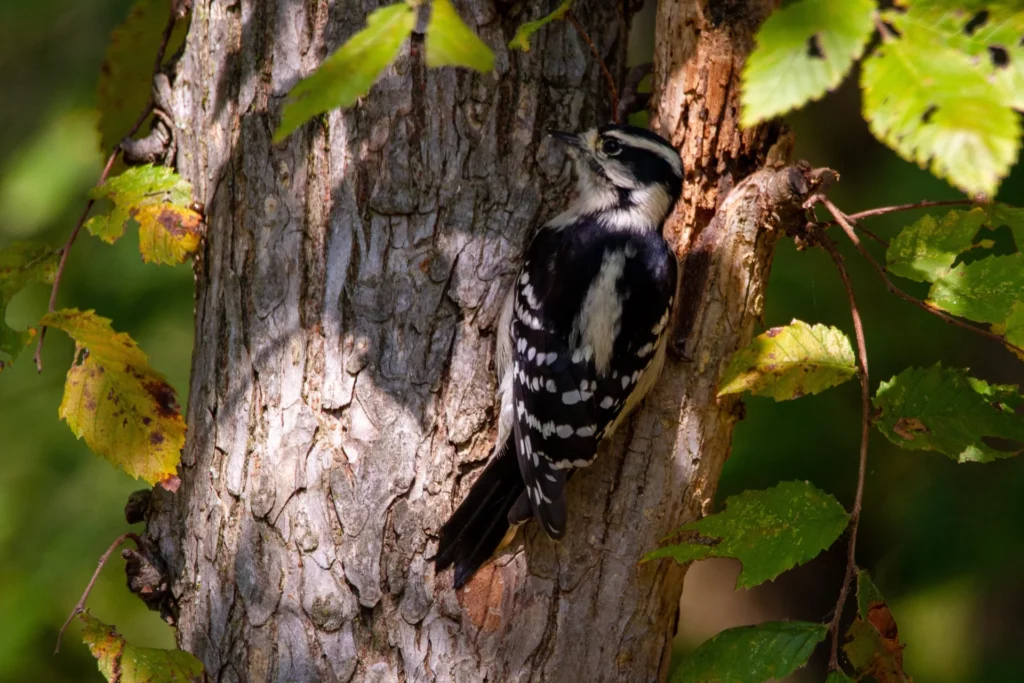
- Scientific Name: Picoides pubescens
- Wingspan: 10 to 12 inches
- Height: 5.5 to 7.1 inches
- Weight: 0.74 – 1.2 ounces
On a typical day in New Hampshire, you might see a couple of downy woodpeckers. These little birds are the most common here and have made themselves at home around us.
They get all the food they need from backyard feeders. Downy woodpeckers get their names from the black-and-white patterns and soft texture of their wings.
Also, a distinctive white patch runs down the middle of their backs. The easiest way to spot a downy is by looking for tiny bills similar to a sparrow. And they are also mostly white underneath.
2. Hairy Woodpecker
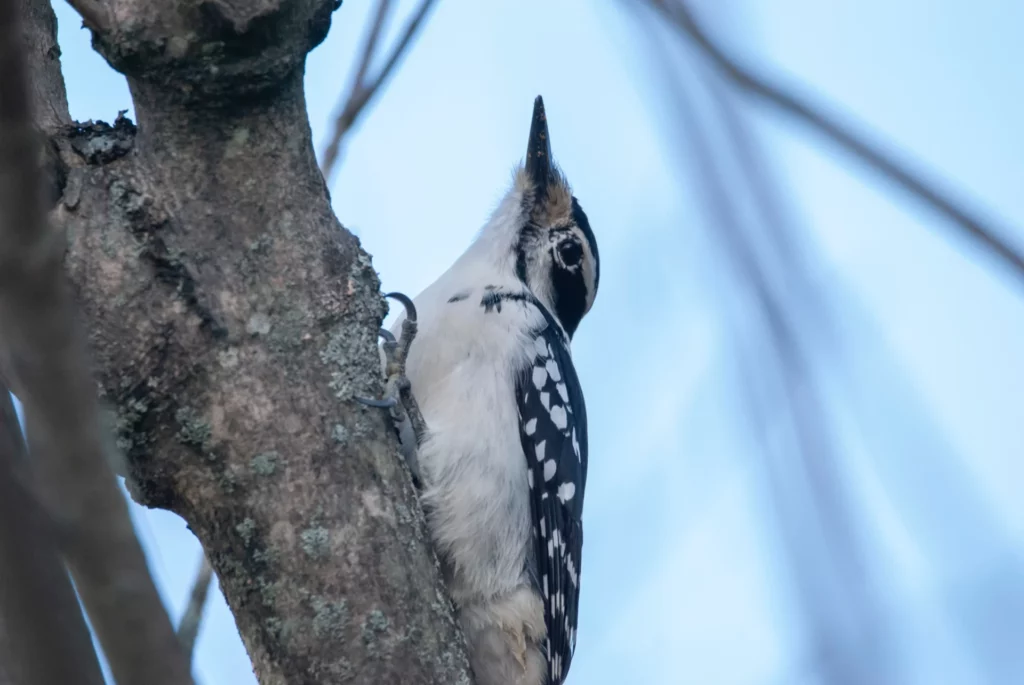
- Scientific Name: Leuconotopicus villosus
- Wingspan: 13 to 17 inches
- Height: 9 to 9.5 inches
- Weight: 1.5 to 3.5 ounces
Hairy woodpeckers are commonly mistaken for Downy’s. I do not blame you. They both have very similar patterns. So, how can you distinguish between the two?
There are two main things to look for – the size and the bill. Hairy woodpeckers are about two times larger than Downy woodpeckers.
Moreover, they have a pointier and larger bill. Hairy woodpeckers are also not as social as downy woodpeckers. You will not see them feeding from backyard feeders. These woodpeckers mostly eat insects from trees.
3. American Three-Toed Woodpecker

- Scientific Name: Picoides dorsalis
- Wingspan: 14 to 15 inches
- Height: 7.5 to 8.5 inches
- Weight: 2 to 2.5 ounces
You must visit the northern sides to spot three-toed woodpeckers in New Hampshire. The white mountains are a particularly good place to see one.
The name for the American three-toed woodpeckers comes from the number of toes they have – duh. Most species have four toes. However, this one only has two toes pointing toward the front and one at the back.
The three-toed woodpeckers are also one of the hardest to spot. There are not many distinguishing features except the small yellow patches on their heads, which only the males have. The rest of their bodies are generically patterned in white and black colors.
4. Pileated Woodpecker
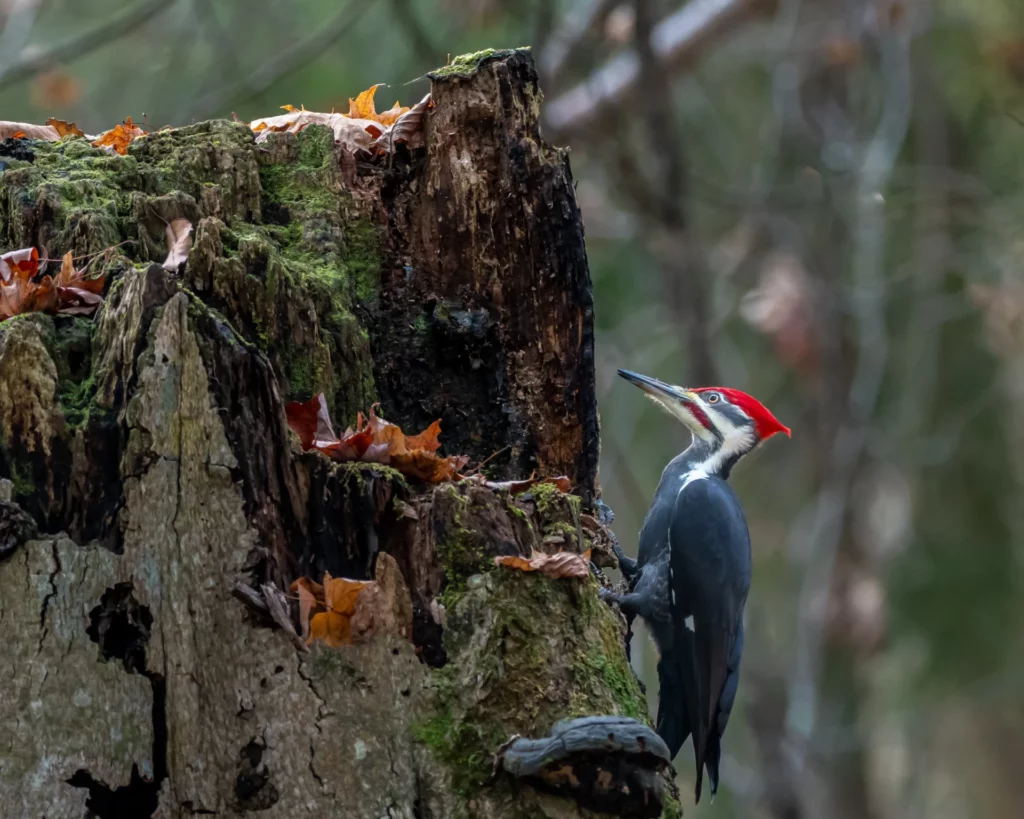
- Scientific Name: Dryocopus pileatus
- Wingspan: 26 to 30 inches
- Height: 16 to 19 inches
- Weight: 8.8 to 14 ounces
If you have ever seen the iconic character Woody Woodpecker, you already know what these birds look like. Pileated woodpeckers inspired the character design of the cartoon.
Their bodies are entirely black, with a prominent and pretty hard-to-miss red crest on their head. Fortunately, Pileated woodpecker numbers are increasing day by day.
Despite that fact, you are not that likely to see one in your backyard. These birds prefer to live in forests where they can hunt for insects inside trees. But if you do happen to have one in your backyard, you will hear them.
Pileated woodpeckers have a very distinct sound. They are loud birds with an almost prehistoric-sounding call.
5. Northern Flicker
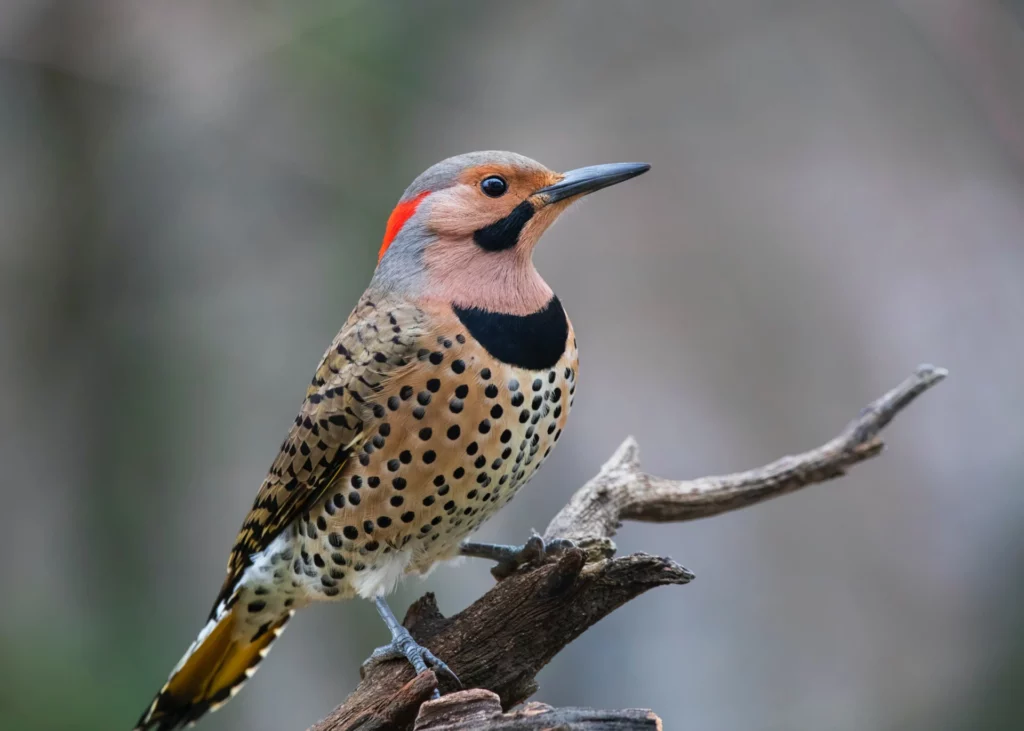
- Scientific Name: Colaptes auratus
- Wingspan: 17 to 21 inches
- Height: 7 to 15 inches
- Weight: 4.5 ounces
There are many ways you can identify northern flicker woodpeckers. First up is the noticeable black patch of feathers right above their chests. Another prominent feature of these birds is the bright red patch at the back of their neck.
But chances are it will probably be difficult to glance at the back of a bird’s head when it is flying above you or sitting on a tree. To identify one from below, look for yellow highlights underneath its wings.
You will be able to find these little birds all over New Hampshire. However, they migrate to the northern part from February to July for the mating season.
6. Yellow-Bellied Sapsucker
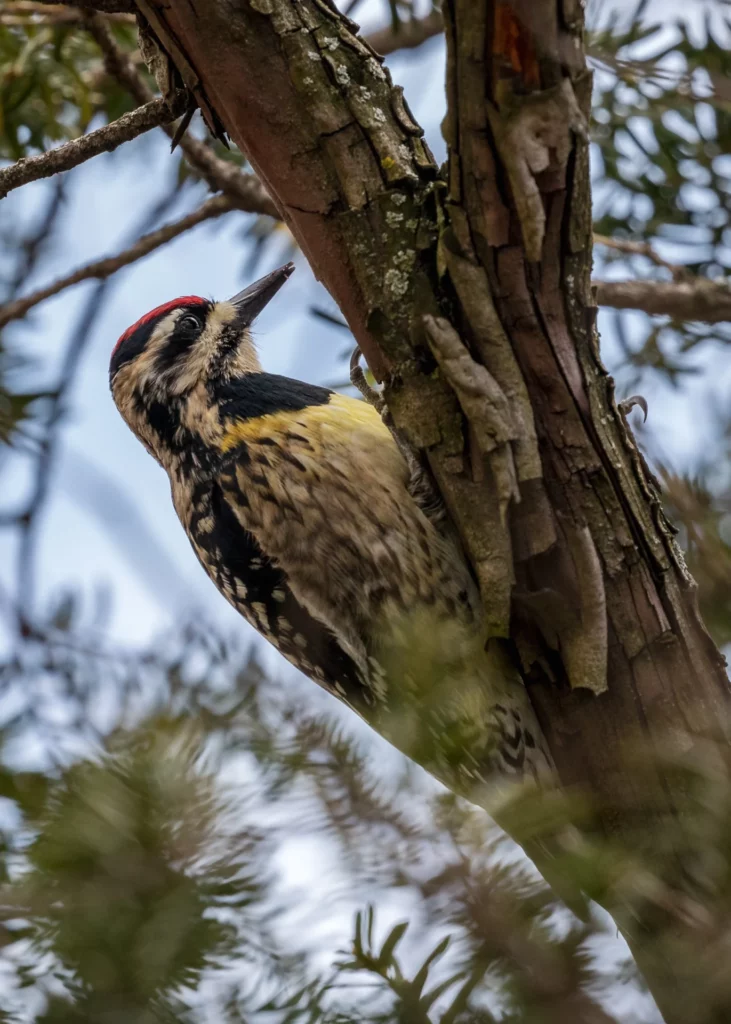
- Scientific Name: Sphyrapicus varius
- Wingspan: 13.5 to 16 inches
- Height: 7.5 to 8.3 inches
- Weight: 1.6 ounces
These woodpeckers are not easy to spot due to their relatively small size. Like the Pileated woodpeckers, these birds also have red patches on their heads – minus the prominent crest. The easiest way to identify one is by their yellowish bellies.
Unlike the pileated woodpeckers, the number of yellow-bellied sapsuckers populations is decreasing due to deforestation. Try to look out for one during their breeding season, right around spring, if you want to spot these birds.
Moreover, yellow-bellied sapsuckers are migratory birds and fly south to warmth. These birds also have pretty good table manners. They drill holes into trees in neatly organized rows to feed on tree sap.
7. Black-Backed Woodpecker
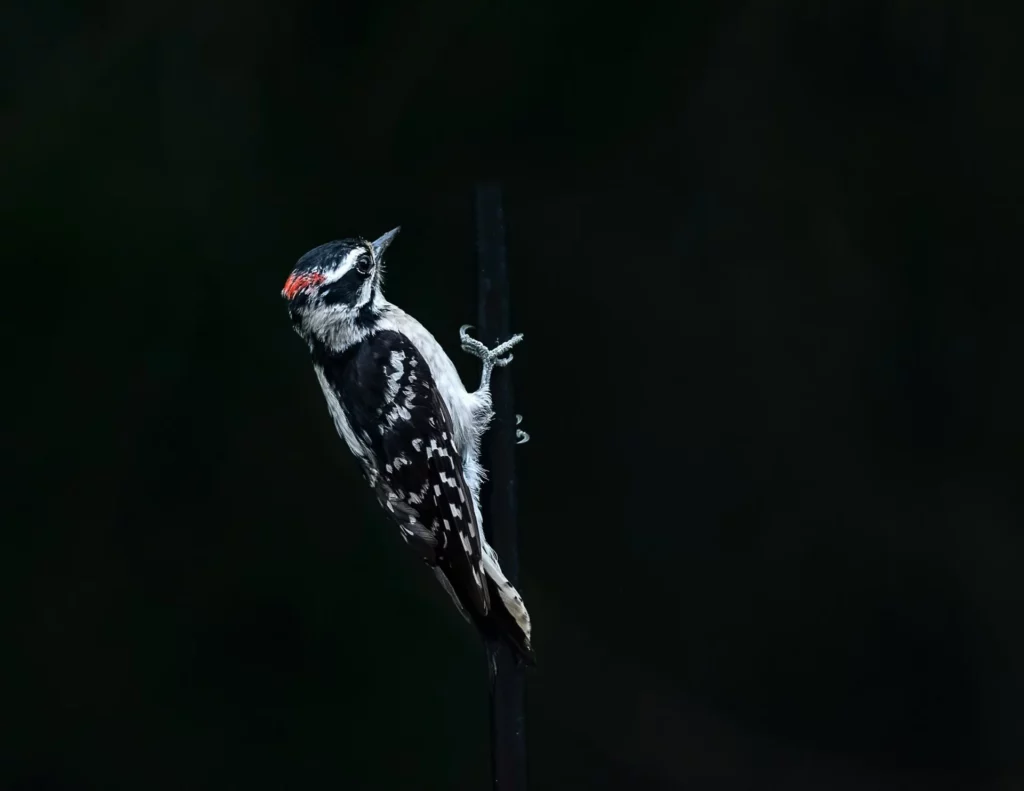
- Scientific Name: Picoides arcticus
- Wingspan: 14 to 15 inches
- Height: 9 inches
- Weight: 2 to 2.5 ounces
Black-backed woodpeckers are easy to spot. They have a bright white underbelly and almost charred-like dark wings. And only the males have a yellow spot on their foreheads.
These birds love burned forests where they can hunt for insects. Which, if you ask me, is a natural fit. Their dark plumage allows them to blend in perfectly.
Black-backed woodpeckers are almost the same size as hairy woodpeckers. And they have a bill that is quite long relative to their fame.
Interestingly, most of the black-backed woodpeckers live in Canada. However, you can still see them in New Hampshire all year round.
8. Red-Bellied Woodpecker
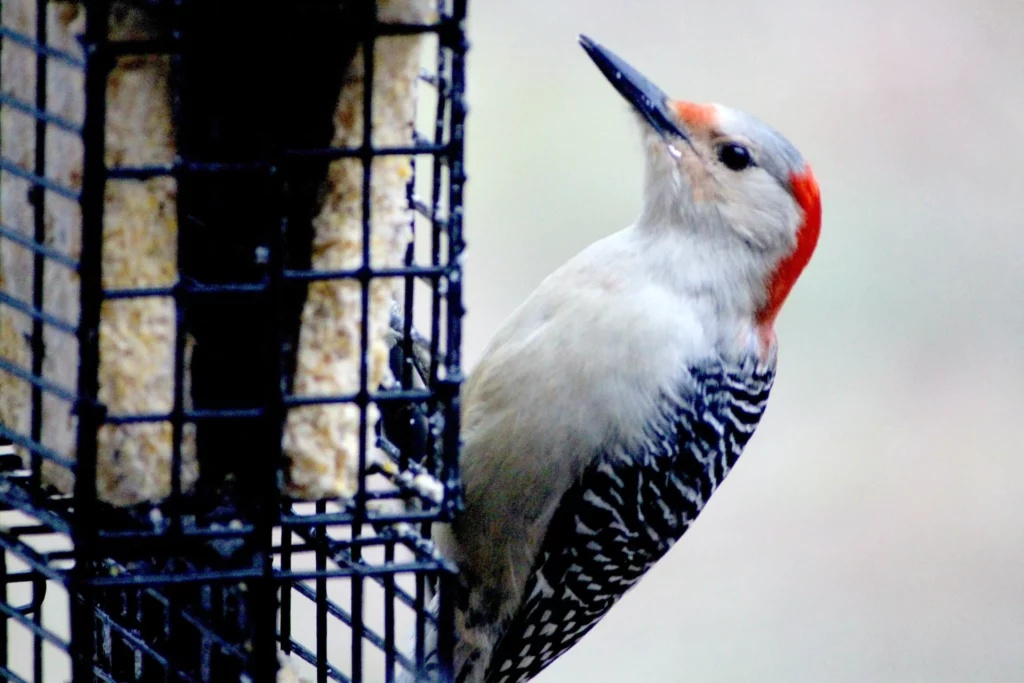
- Scientific Name: Melanerpes carolinus
- Wingspan: 15 to 18 inches
- Height: 9 to 10.5 inches
- Weight: 2 to 3 ounces
Red-bellied woodpeckers are perhaps one of the most vocal birds in the species. They make various sounds to communicate, like chuckles, trills drumming sounds on trees.
Despite the name, these birds do not always have a red belly. They only get a reddish hue on their stomach during mating season. Maybe it is how they blush? For the rest of the year, they will have a gray color.
But you can spot one by looking at their heads. Ironically, red-bellied woodpeckers always have a prominent red patch on their heads. Their wings have sort of a striped black and white pattern.
Despite being small, these birds are resilient. They often eat from bird feeders and aggressively compete with other birds.
9. Red-Headed Woodpecker
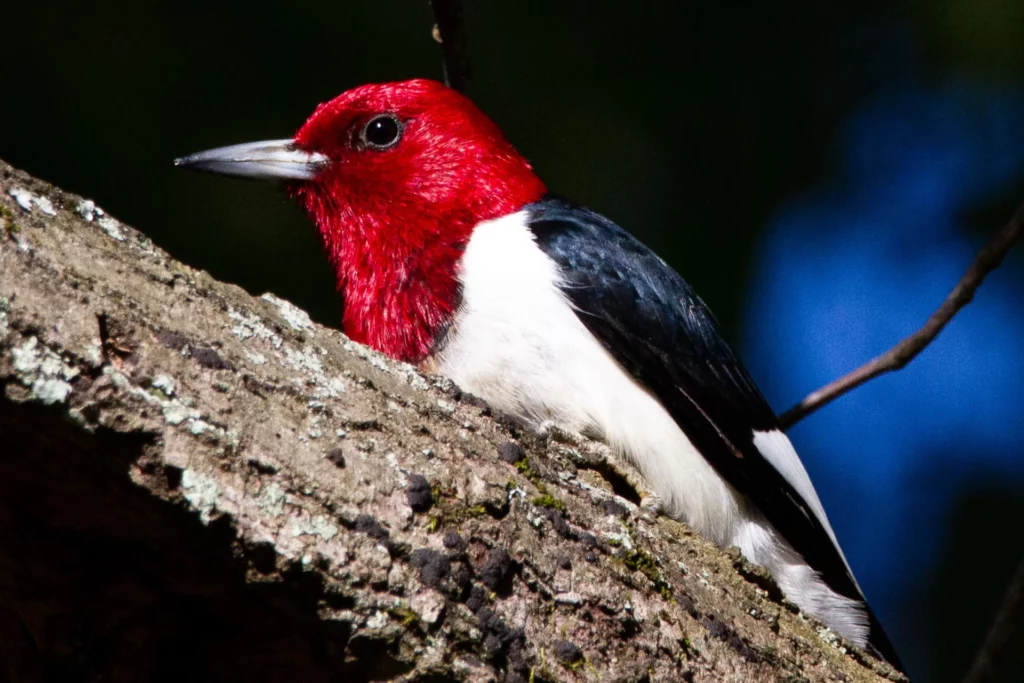
- Scientific Name: Melanerpes erythrocephalus
- Wingspan: 16 to 17 inches
- Height: 7.5 to 9.8 inches
- Weight: 2 to 3.5 ounces
Red-headed woodpeckers are some of the easiest to spot. Their whole head is bright red! And their bellies are all white. The wings of a red-headed woodpecker are black at the top.
Although it is pretty easy to spot a red-headed woodpecker, most are not New Hampshire residents. These boldly-patterned birds migrate south during the winter. So, if you want to spot one in New Hampshire, summer is the best time.
These birds are clever and active hunters. Their hunting technique is the most interesting thing about them, actually. They often grab insects in mid-air. They are even known to store food in small crevices and cover them with leaves or tree bark.
Conclusion
Not all species of woodpeckers in New Hampshire love to hang around bird feeders. So, you will need to go outside and be a little adventurous to see all 9 of them.
If you are keen and know what to look for, you can identify the exact species when you happen to spot one. Identifying and watching the woodpeckers live their daily lives is half the joy. The other half is if you happen to have one visit your backyard.

